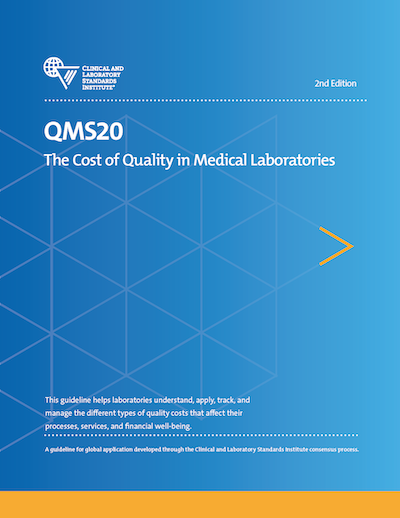Do You Know the Cost of Quality in Your Lab?
11/10/2020

Most laboratories use methods such as QC, equipment calibration measurement, QA measurements of process performance, and more recently, implementation of a quality management system, to determine the quality of examination results and laboratory services. However, laboratory personnel often believe that staying within budget is sufficient, not considering that every time work is redone, the cost of laboratory services, as well as the cost of quality (COQ), increases. Personnel need to remember that corrections needed for improperly ordered examinations, unacceptable specimens, QC failures, lost reports, erroneous results, etc., increase laboratory and organizational costs and can adversely affect patient care. Historically referred to as the “cost of poor quality,” these costs would not have been expended if laboratory quality were perfect.
COQ encompasses a methodology that enables the laboratory to understand the different types of quality costs, apply the cost types to its budget and expenditures, communicate quality cost information within the laboratory and to the larger organization, and improve its use of limited resources. The term “quality costs” represents the different types of costs associated with a laboratory process. Costs that support good quality in the laboratory are categorized as prevention and appraisal costs. Costs that detract from good quality are categorized as internal failure and external failure costs.
COQ represents “the difference between the actual cost of a product or service and what the reduced cost would be if there were no possibility of substandard service, product failure, or manufacturing defect.”1 Essentially, any cost that would not have been expended if quality were perfect contributes to an increased COQ.1 In other words, the total cost of producing a product or service is the sum of the costs to achieve good quality and costs expended to rectify poor quality.
The new edition of CLSI’s guideline QMS20—The Cost of Quality in Medical Laboratories describes quality costs in laboratory expenditures (including prevention, appraisal, internal failure, and external failure costs) and suggests ways that laboratories can apply this information to continually improve their processes, services, and financial performance.
Reference
1. Wood DC, ed. Principles of Quality Costs: Financial Measures for Strategic Implementation of Quality Management. 4th ed. Milwaukee, WI: ASQ Quality Press; 2013.
